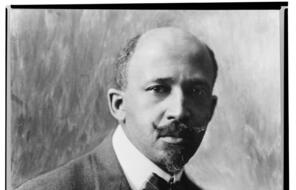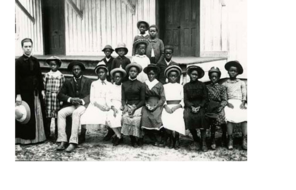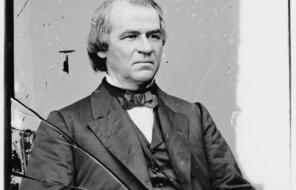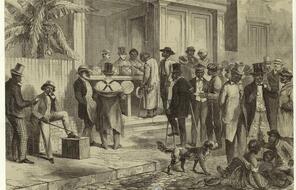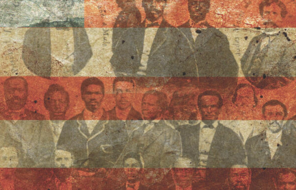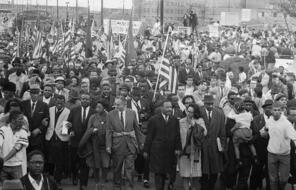Being Well Born: New Civic Biology by George William Hunter
At a Glance
Language
English — USSubject
- History
- Racism
This historical text appears as Handout 3.3 on page 80 of Teaching Mockingbird.
What does it mean to be a “Finch,” a “Ewell,” or a “Cunningham”? Many of the residents of Maycomb express the belief that the family one is born into carries great significance in determining one’s character or behavior. This was an especially common belief in the first half of the twentieth century, as many scientists advanced the now-disproved idea that not only disease and disability but also intelligence and morality are biologically inherited from generation to generation.
In New Civic Biology, a textbook first published in 1914, author George William Hunter alerted young people to the “menace of feeblemindedness” (the inability to make intelligent, moral choices) and the value of “breeding the best with the best” by using the language of science to heighten real fears about the spread of diseases and the threat of possible disabilities.
Since our knowledge of heredity has been increased, the demand has become more urgent that we do something to prevent the race from handing down diseases and other defects, and that we apply to man some of the methods we employ in breeding plants and animals. This is not a new idea; the Greeks in Sparta had it, Sir Thomas More wrote of it in his Utopia, and today it has been brought to us in the science of eugenics. The word comes from the Greek word eugenes, which means well born. Eugenics is the science of being well born, or born well, healthy, fit in every way. A tendency to cancer, or tuberculosis, or chorea, or feeblemindedness, is a handicap which it is not merely unfair, but criminal, to hand down to posterity.
Two Notorious Families
Studies have been made on a number of different families in the country, in which mental and moral defects were present in one or both of the parents as far back as was possible to trace the family. The “Jukes” family is a notorious example. “Margaret, the mother of criminals,” is the first mother in the family of whom we have record. Up to 1915 there were 2094 members of this family; 1600 were feebleminded or epileptic, 310 were paupers, more than 300 were immoral women, and 140 were criminals. The family has cost the state of New York more than $2,500,000, besides immensely lowering the moral tone of the communities which the family contaminated.
Another careful investigation (up to 1912) concerned the “Kallikak” family. This family was traced to the union of Martin Kallikak, a young solider of the War of the Revolution, with a feebleminded girl. She had a feebleminded son, who had 480 descendants. Of these 33 were sexually immoral, 24 confirmed drunkards, 3 epileptics, and 143 feebleminded. The man who started this terrible line of immorality and feeblemindedness later married a normal Quaker girl. From this couple, a line of 496 descendants was traced, with no cases of feeblemindedness. The evidence and the moral speak for themselves!
Parasitism and Its Cost to Society
Hundreds of bad families such as those described exist today, spreading disease, immorality, and crime to all parts of this country. The cost to society of such families is very severe. Just as certain animals or plants become parasitic on other plants or animals, these families have become parasitic on society. They not only do harm to others by corrupting, by stealing, and by spreading disease, but they are actually protected and cared for by the state out of public money. It is estimated that between 25% and 50% of all prisoners in penal institutions are feebleminded. They take from society, but they give nothing in return. They are true parasites. . . .
Blood Tells
Eugenics shows us, on the other hand, in a study of families in which brilliant men and women are found, that the descendants have received the good inheritance from their ancestors. . . . Although we do not know the precise method of inheritance, we do know that musical and literary ability, calculating ability, remarkable memory, and many other mental and physical characteristics are inheritable and “run in families.” The Wedgewood family, from which three generations of Darwins have descended, and the Galton family are examples of scientific inheritance; the Arnolds, Hallams, and Lowells were prominent in literature; the Balfours were political leaders; the Bach and Mendelssohn families were examples showing inheritance of musical genius. A comparison of fathers’ and sons’ college records at Oxford University shows [that] . . . fathers who did well had sons who did well also. It is said that 26 out of 46 men chosen to the Hall of Fame of New York University had distinguished relatives. Blood does tell!
How to Use Our Knowledge of Heredity
Two applications of this knowledge of heredity stand out for us as high school students. One is in the choice of a mate, the other in the choice of a vocation. As to the first, no better advice can be given than the old adage, “Look before you leap.” If this advice were followed, there would be fewer unhappy marriages and divorces. Remember that marriage should mean love, respect, and companionship for life. The heredity of a husband or wife counts for much in making this possible. And, even though you are in high school, it is only fair to yourselves that you should remember the responsibility that marriage brings. You should be parents. Will you choose to have children well born? Or will you send them into the world with an inheritance that will handicap them for life? 1
- 1George William Hunter, New Civic Biology: Presented in Problems (New York: American Book Co., 1926).
How to Cite This Reading
Facing History & Ourselves, “Being Well Born: New Civic Biology by George William Hunter,” last updated March 14, 2016.
This reading contains text not authored by Facing History & Ourselves. See footnotes for source information.







